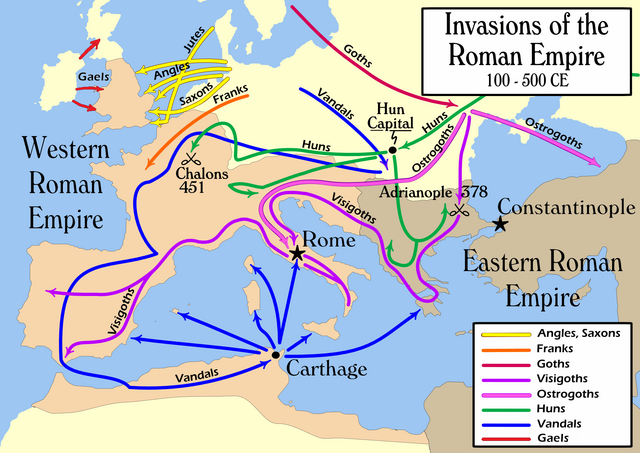Migration period
period in European history with large migration of peoples, from the 4th to the 6th centuries From Wikipedia, the free encyclopedia
Remove ads
The migration period, or barbarian invasions or Völkerwanderung happened in 300–700 AD in Europe,[1][2] at the end of ancient history and during the Early Middle Ages.

The migrations included the Goths, Vandals, Franks, and other Germanic tribes; the Bulgars; and Slavic tribes.[3] They may have been influenced by attacks of the Huns in the East and may also be connected to the Turkic migrations in Central Asia, overpopulation, or climate change. The migration period also included groups of Angles, Saxons, Frisians, and some Jutes to Britain.[4]
The migrations would continue well into the Middle Ages, beyond 1000 AD, with successive waves of Slavs, Roma, Avars, Bulgars, Hungarians, Pechenegs, Cumans, and Tatars, which changed the ethnic makeup of Eastern Europe.[5] Historians in Western Europe, however, tend to stress the migrations that were most relevant to that area.
Remove ads
Related pages
References
Other websites
Wikiwand - on
Seamless Wikipedia browsing. On steroids.
Remove ads
